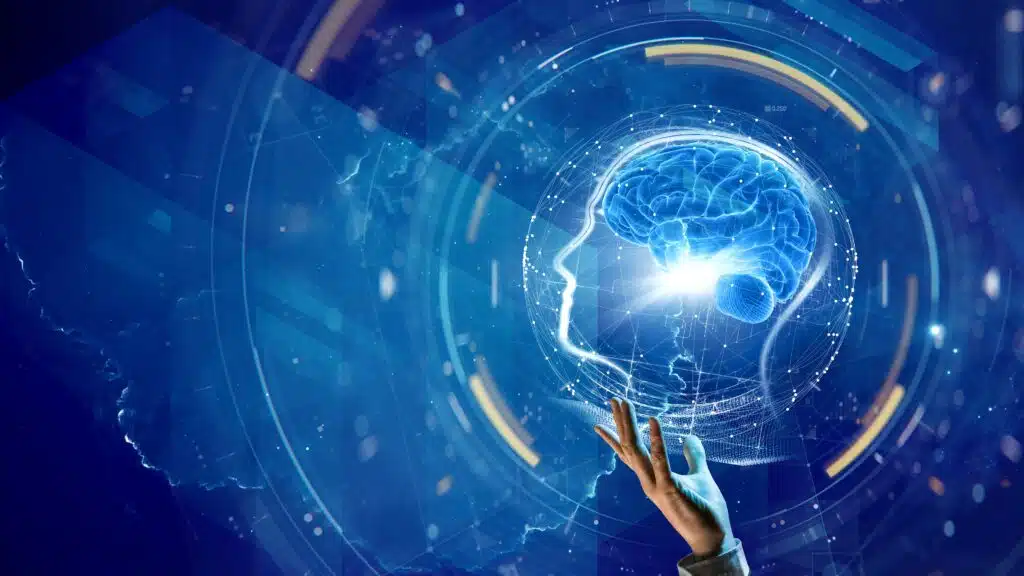Most people are familiar with migraines and how devastating and debilitating they can be for those who suffer from them. However, unless you or a close friend or relative of yours has been diagnosed with migraines, you may not know that there are, in fact, many different types of migraines, each with its own defining characteristics. These migraine types include but are not limited to migraine with aura, migraine without aura, hemiplegic migraine, chronic migraine, status migrainosus, and migraine aura without headache.
First, What Is An Aura?
Before we describe the differences between migraine with aura and migraine without aura, it is essential that we first define the term aura and its relation to migraines. As discussed in a previous blog post, migraine attacks involve multiple phases. An aura is one of the phases of the overall migraine process that involves neurological impairments that affect a person’s sensory perceptions, motor skills, or speech. For example, patients with visual auras typically report seeing blind spots, bright flashing lights, or wavy lines. Other patients with auras report symptoms such as muscle weakness, numbness in their arms or face, and difficulties with speaking.
Migraine Type 1: Migraine With Aura
As its name suggests, people diagnosed with migraine with aura experience an aura as part of their migraine attack. They commonly view the aura as a “warning sign” that their head will soon begin hurting. They view it as such because in migraines with aura, the aura phase typically immediately precedes the headache phase. The aura typically lasts from several minutes to about an hour.
Migraine Type 2: Migraine Without Aura
Conversely, people diagnosed with migraine without aura do not experience an aura as part of their migraine attack. Often referred to as the “common migraine”, migraine without aura is far more common than migraine with aura. The American Migraine Foundation notes that about 75% of migraine sufferers do not experience an aura during their migraines. This statistic indicates that most migraine sufferers don’t experience specific symptoms that warn them of impending head pain.
Migraine Type 3: Hemiplegic Migraine
Hemiplegic migraine is a rare subtype of migraine with aura. The hallmark symptom of hemiplegic migraine is mild to severe muscle weakness or paralysis on one side of the body. This symptom typically occurs during the aura phase of the migraine attack, and it is often accompanied by other sensory disturbances, such as vision changes or temporary numbness. Hemiplegic migraine can be challenging to diagnose because the symptoms of this migraine closely resemble those of a hemiplegic stroke. Check out this incredible video of Kelsey, a former patient of Reed Migraine Centers, who had been suffering from hemiplegic migraines for years before we met her. In the video, her husband turns off her Reed Migraine trial stimulator, and you can immediately see the muscle weakness develop on one side of her face. As soon as her husband turns the stimulator back on, the muscle weakness is immediately alleviated!
Migraine Type 4: Chronic Migraine
Chronic migraine is a highly debilitating type of migraine. A patient is diagnosed with chronic migraine if they experience headaches at least 15 days of the month. Additionally, the patient must have symptoms that meet the criteria for migraine on at least 8 of those headache days. People diagnosed with chronic migraine who have not achieved lasting pain relief with traditional migraine treatments are excellent candidates for the Reed Migraine Procedure.
Migraine Type 5: Status Migrainosus
Status migrainosus is a condition in which a patient has experienced a migraine for longer than 3 consecutive days. While it is a rare type of migraine, it is considered more dangerous than a regular migraine because of its prolonged nature and resistance to common migraine treatments. Unlike regular migraines that respond to prescribed or over-the-counter pain relievers, status migrainosus often requires the patient to go to the emergency department to receive medication strong enough to treat the migraine. Patients experiencing status migrainosus also frequently feel nauseous and repeatedly vomit during the migraine attack, so they often require IV fluids to combat the resulting dehydration.
Migraine Type 6: Migraine Aura Without Headache
People commonly assume that if a person is suffering from a migraine, they must have a headache. However, this is not always the case. Migraine aura without headache, sometimes referred to as a “silent migraine”, occurs when a person experiences the symptoms of a migraine aura but never actually develops a headache. This type of migraine can be brought about by the same types of triggers that induce migraine attacks that do include head pain. Even though it doesn’t cause head pain, migraine aura without headache is a disabling condition because of the symptoms associated with the aura phase.
Conclusion
As we can see, migraines can be one of many types. All migraines present with similar symptoms, but each type of migraine has unique characteristics that distinguish it from the other types. Therefore, all migraine patients need to have their condition accurately diagnosed so that they may receive the appropriate migraine therapy for their specific type of migraine. Thankfully, at Reed Migraine Center, our experience has shown us that the Reed Migraine Procedure can effectively treat all migraine types.


